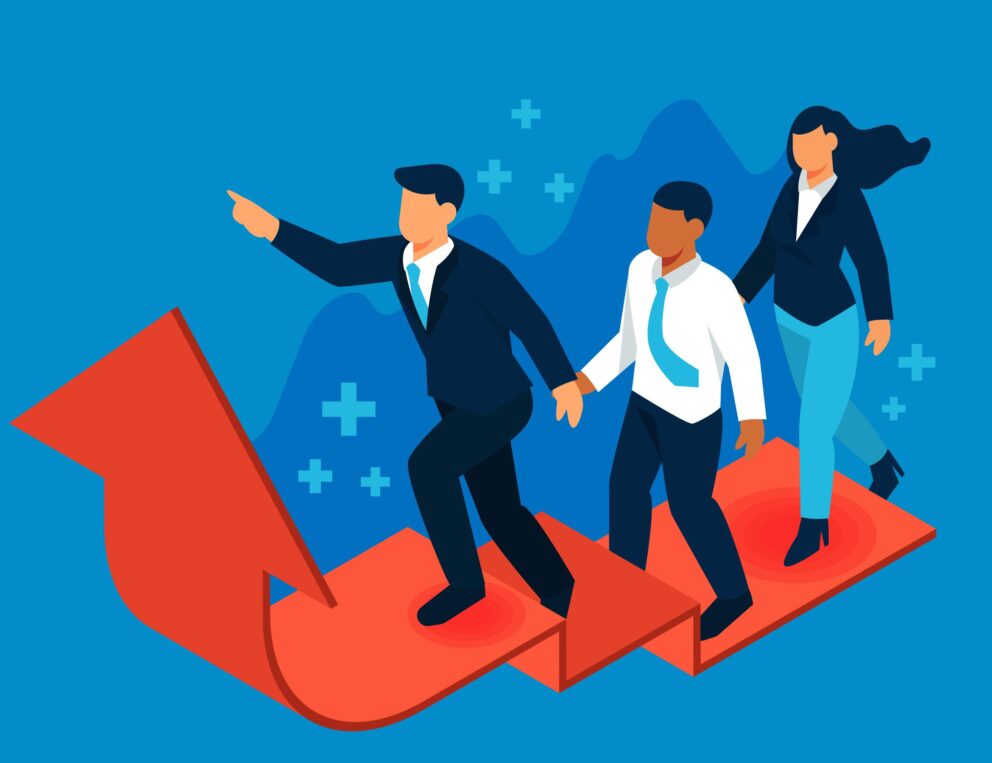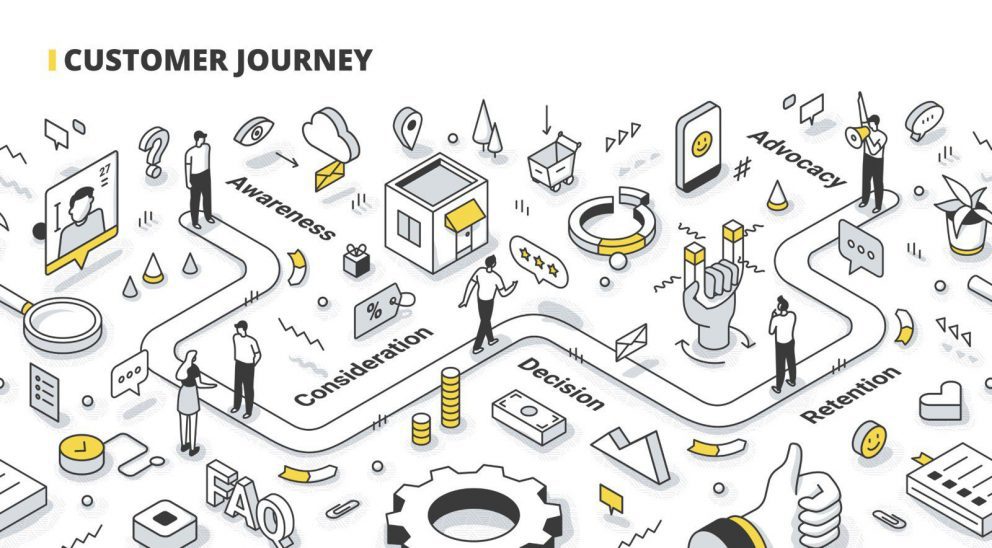Marketing’s Role Post Purchase

Summary
In an economic downturn, marketers must navigate budget cuts and resource limitations. To thrive, they should focus on maximizing the value of existing customers, as retaining loyal customers is more cost-effective than acquiring new ones. Marketers can drive growth through positive customer experiences at every stage of the customer journey, starting with effective onboarding, followed by improving product adoption, fostering loyalty through reward programs and communities, and finally, encouraging brand advocacy through engaged customers and influencers. Collaboration with cross-functional teams is essential for success.
By Payal Parikh, VP of Client Services at Heinz Marketing
Marketers are facing budget cuts and a resource crunch. What do we do in this economic downturn? The goals have not been reduced and most likely, the yearly quotas seem too far-fetched as we are nearing the end of the year. Getting the most out of what you already have is the key to the current economy.
Marketing’s role doesn’t stop at acquiring new customers, it goes beyond the purchase stage. Marketing can play a role in every stage of the customer journey.
During an economic downturn, it’s more important than ever to remember that loyal customers are an important source of cash flow and organic growth. The reduced marketing budget is essential to bringing in revenues from key customers.
And why is that?
- The cost of new customer acquisition is 5-7X more than to maintain an existing one
- The success rate of selling to existing customers can be as high as 70% compared to 20-25% for new customers. This means higher win rates!
- Greater ROI – a 5% increase in retention rate can increase company revenue by 25-95%
Just as a refresher, this is what a customer journey looks like in a bow tie funnel. A bow tie funnel extends your traditional funnel beyond the purchase stage with the loyalty and customer advocacy stages. The funnel is flipped horizontally and creates a visual of consistent growth.
I would like to share some strategies for every stage of the customer journey and how marketing can create growth through positive customer experience through all the stages of the bow tie funnel.
Onboarding
Onboarding is one of the primary phases in a customer journey. It is the time when all the promises made by sales and marketing are put to the test. The customer might already be quite apprehensive about the brand. There is a fear of abandonment and about making the right choice “Am I going to see the results as promised and is this company going to abandon me now that they have won my business?” A good onboarding will help ease these fears and it is done with people and with messages. Having consistent messaging from marketing and others in the organization reinforces the confidence they have made the right choice.
Onboarding has to be orchestrated skillfully for the customer to realize the value of the product within no time. Onboarding is not just about getting your customer familiar with the product. It is also about hand-holding the customer in the initial usage which fits right in their context. They need to start finding value from the product to make sure that their ROI is soon and easily recovered. And, onboarding metrics help you gauge if your customers can attain those results or not.
Strategies for great onboarding
- White glove service: If you have a free trial for your product, look at all of them from the ICP lens. Hand-pick all accounts that fit your ICP criteria, and filter further based on high-value accounts. Once you have a narrowed down list, provide a white glove kind of service for onboarding them to your free trial product. Hand-holding the high-value ICP fit customers in the initial usage will help them realize the value of your product faster and make the experience much more positive.
- Keep a human touch to ensure you have a personal touch throughout the onboarding process at various touchpoints
- Standardize your internal processes to keep the flow seamless
Adoption
Customer adoption is a stage that comes after customer onboarding. It is a process when your customer learns to use your product and if they are using it as intended. Knowing product usage behavior tells you which levels of adoption to prioritize.
How can marketing help with improving adoption?
- Provide a clear value proposition. Like in the onboarding stage, if your early messaging doesn’t match your customer’s later interactions with your product, they’ll be disappointed. Marketing can make sure the entire organization is aligned on the value proposition and messaging. Here are some ideas on how to develop effective messaging for your solution. And before you even get started, read an article from my colleague Brittany Lieu – 3 Messaging Mistakes No One Talks About.
- Focus on the first days and weeks of a customer’s experience. Watch out for early warning signs of frustration using the product and work with CS teams closely to proactively address them.
- Again, work closely with CS teams to gather insights on the most important features for customers, so you can start thinking about what new customer onboarding ‘should’ look like.
- Deploy Expansion Plays and Recovery Plays. Expansion plays drive active customers to expand their use of the product. Recovery plays offer insight into how your product or service could be better.
- Product! The biggest key to faster product adoption is always your product. Stickier your product, the higher your conversions from free to paid.
Loyalty
The next stage in the customer journey is loyalty. You have successfully adopted your product, and your customers have realized the value of using your product. Now you want these customers to keep coming back to you. Loyalty is all about retaining existing customers. There are a lot of strategies to improve loyalty through reward and loyalty programs. Here are a couple of plays to get started right away:
Loyalty programs
There are multiple loyalty programs that can work for your business. I would start with defining your objectives and what you want the loyalty program to achieve. Also, define what a loyal customer means to your business. Follow with identifying these loyal customers. Hubspot has a great article about different types of loyalty programs.
Communities
User communities or loyalty communities are designed to foster maximum customer engagement through community-level bonding. Communities allow your brand to connect with your customers and facilitate problem-solving and creating personalized experiences. Using communities also opens the door to brand advocacy.
Marketing can be at the forefront of creating these loyalty programs and user communities so the tech support and customer success teams can have those meaningful connections and conversations with the customers.
Advocacy
Brand advocates elevate your brand through word-of-mouth marketing. They are the ones engaging with their peers and talking about positive experiences about your brand. There are a number of ways you can keep track of brand advocates and also encourage your top customers to be your brand advocates.
- Provide your audience with firsthand experiences and opinions from people they trust
- Reward your brand advocates
- Turn loyal influencers into customer advocates by utilizing them as a source of quality content, PR, and referrals
- Create easy-to-use #hashtags and encourage your advocates to use them on their social channels
Whatever customer journey stage you are problem-solving in, always remember to collaborate with cross-functional teams – product, product marketing, customer success, support, and of course sales.
Let us know if we can help you develop your bow tie funnel, strategies to get started on this journey, and define metrics to measure success beyond the traditional funnel. Reach out to us for a free 30 min consultation! payal@heinzmarketing.com.





